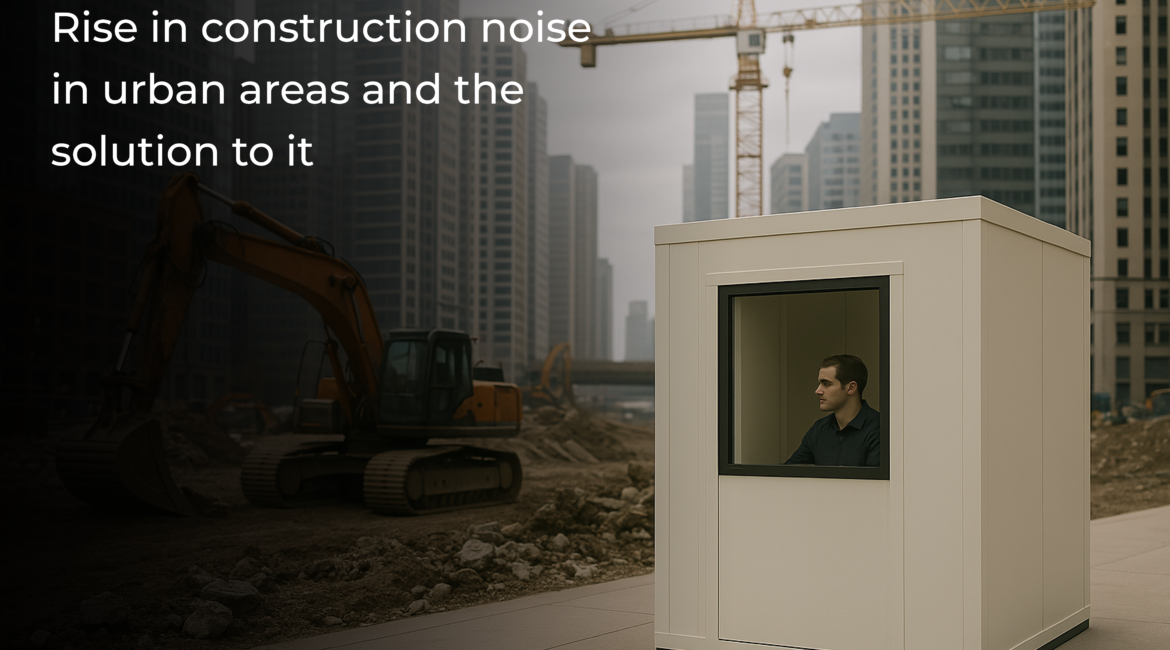As per a report published in Hindustan Times, Mumbai had a whopping 11,125 active construction sites in 2023 excluding infrastructure projects like coastal roads and Metro. Construction noise is a significant problem in India and citizens living near these sites are constantly assailed by noise leading to health issues and affecting their quality of life.
Sources of Construction Noise
There are various sources of construction noise which includes noise generated by construction equipment like bulldozers, cranes, and pile drivers. Transport activities like loading, unloading and moving of construction equipment and demolition activities also add up to construction noise. Even human activities like workers shouting and other activities add to the noise levels.
Regulations and Permissible Limits
The central government’s Noise Pollution (Regulation and Control) Rules, 2000 mentions ambient noise levels during daytime and nighttime. The laws mandate that ambient noise levels should not exceed 55 decibels during daytime and 45 decibels during nighttime. As per data collected by an NGO foundation in Mumbai working on noise pollution, the noise levels in the city in some regions exceed 100 decibels during the daytime and sometimes this severe noise pollution goes on till late at night. It clearly shows government authorities have failed to address the issue of construction noise and sound pollution altogether. The result is stress difficulty in performing daily activities and health problems like hearing loss and increased blood pressure.
Peace Amid Progress: The Role of Noise Barriers in Construction Noise Control
There is no doubt building and improving infrastructure and creating affordable housing is crucial for the nation’s progress. This does not mean people have to live with construction noise pollution and suffer from health-related issues caused by such sound pollution. Noise Barrier technology can rescue citizens from construction clatter and help combat construction noise with confidence.
What are Noise Barriers?
Noise barriers are designed to reduce noise pollution by blocking sound waves and protecting the designated area. The primary aim of noise barriers is to shield people from excessive noise caused by construction equipment and activities. Noise barriers can take various forms like earth beams, and solid walls made of wood, metal, or polycarbonate.
How do they work?
Noise barriers work by absorbing, reflecting, or deflecting sound waves thereby reducing noise levels in noise-sensitive areas like residential buildings, hospitals, and offices. They are available in modular form and can be installed easily across roadways, railway lines, and complex boundaries.
Noise barriers can be mono-absorbent or bi-absorbent, the latter being more effective in reducing noise levels in designated areas. Mono-absorbent noise barriers have a single layer of absorptive material. The bi-absorbent noise barrier has two layers of absorptive material. Noise barriers are generally available in three different materials and two thickness options. You can get noise barriers made of aluminum, GI sheets, and polycarbonate. The two thicknesses you can get are 50mm and 100mm.
How effective are noise barriers?
Noise barriers are highly effective in reducing noise levels and you might see them along highways, railway lines, areas with high traffic noise, and near industrial facilities. An aluminum mono-absorbent noise barrier with 50mm thickness can reduce noise levels by 10-12 decibels while a noise barrier with 100mm thickness can reduce noise levels by 15-17 decibels. A bi-absorbent aluminum noise barrier with a thickness of mm will reduce levels by 16-18 decibels while one with 100mm thickness will reduce noise levels by 24-27 decibels. The aluminum noise barriers have higher noise level reduction capacities while the polycarbonate ones have lower noise level reduction capabilities.
Noise barriers can be installed temporarily and you may remove them from your building compound when the construction activities in nearby areas are completed.
Retractable Walls for Acoustic Partition- temporary construction noise control solutions for office spaces and the hospitality sector.
If construction activities are going near your office buildings, your employees are bound to get affected by construction noise. Construction activities go on for a year or more which is a long period and you need to consider soundproofing solutions to protect your employees from construction noise.
Retractable walls can be installed along the length of the room to create private and public spaces in your office. These sound barriers can also be installed in your auditoriums or conference halls where you need to achieve silence. These retractable walls are movable and you can remove them after the construction noise is no longer a problem. The walls are linearly stacked sound barriers with a thin thickness that makes their movement around the office space a tad easy. The retractable walls have an STC rating of 45 decibels which is considered a standard baseline for soundproofing and privacy.
When installed, these retractable walls can reduce construction noise and create a quiet working environment in your office allowing employees to focus on their work.
Wrapping Up:
Construction noise can cause severe health problems like sleep disturbances, hearing loss, stress, and potentially cardiovascular problems. They can affect babies and elder people the most causing noise-induced hearing loss. You can consider installing noise barriers and retractable walls that can reduce noise significantly and improve your quality of life.






